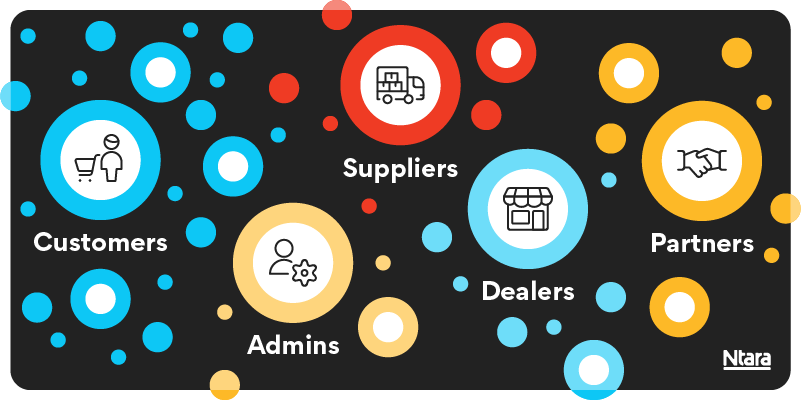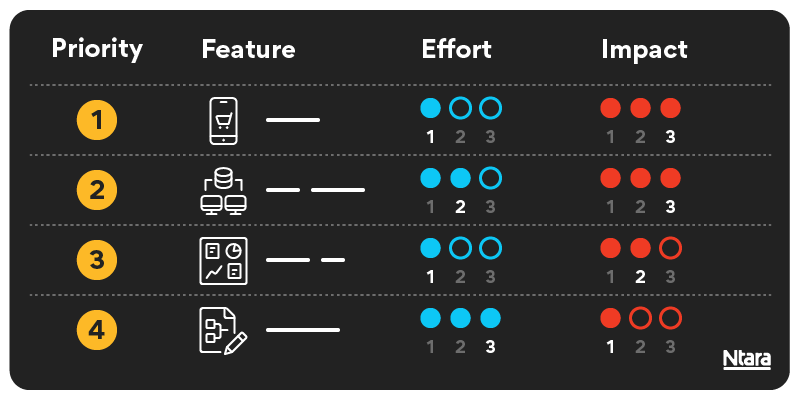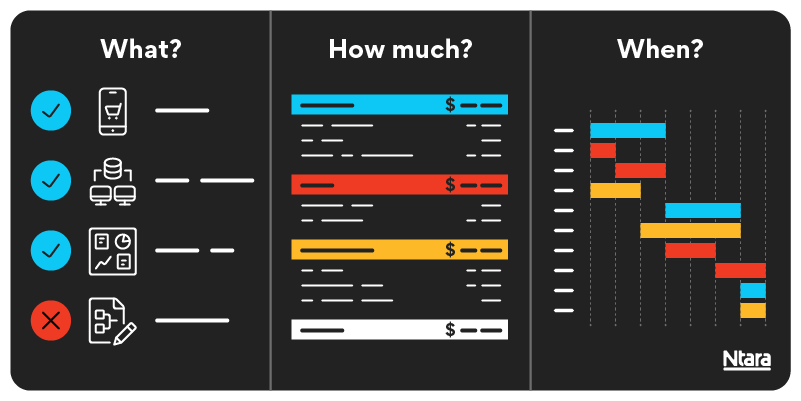What does ecommerce mean to you? This is the first question we ask companies when scoping an ecommerce project. The answers range from a great user experience to transacting online to being able to browse products.
This question can be quite complex in the B2B ecommerce space when you consider lines of credit, intellectual property, pricing differences, special catalogs, and channel partners. These very reasons may be why you feel that an ecommerce upgrade is imminent for your organization.
What makes this even more confounding is that different things are important to different departments within the organization. Whether you are upgrading an existing ecommerce experience or creating a new one from scratch, there are some important steps to begin the process.
Why is it important to “prepare” for ecommerce?
Whether you’re working with an agency, shared services, or in-house partners, many parts of your organization will be involved with your ecommerce project. It’s critical to understand the needs, key players, and decision points that will occur along the way.
Preparing for these critical pieces will prevent the project from delaying, going over budget, or possibly failing. And although you can never account for all the obstacles and unknowns, being prepared will provide you and your team with the right tools to navigate the project successfully.
How do I approach an ecommerce upgrade?
The first step to prepping for an ecommerce upgrade is to align your teams. Putting your users first will greatly simplify the discussions. And “users” don’t always have to be customers. Don’t forget about your admins, suppliers, dealers, and partners. The unique needs and experiences of each user type are important.

With all the factors involved, it can be difficult to determine where to start. The hard truth is that there will be a few meetings in the beginning of your ecommerce journey where pieces are missing, critical items are not yet figured out, and things are generally blurry and unorganized. However, once you begin to talk with your team and define the challenge, the project ahead will start to come into focus.
There are several questions to answer at this phase:
- What is our budget?
- What is our organization’s capabilities?
- Internal vs external resources
- Project team
- Resource allocation
- What is the timeline?
Establishing an ecommerce upgrade budget
Establishing the starting budget can be a challenging task. There are competing priorities, ROI to consider, total cost of ownership may be in question, or you may have to request funds from the board. Oftentimes, it’s a mixture of more than one of these components. You want to get the biggest bang for your buck—and you don’t want to pay for an overpriced project.
When calculating total cost of ownership, there are internal and external resources to consider: platform costs; hidden costs, such as taxes and shipping; and impacts to other business processes/systems that will require updating to accommodate the ecommerce experience. A lack of commitment to a solid budget and plan can contribute to a failed project, either by way of spending too much for a non-defined solution or by not having the allocated capital to align to expectations.
It’s helpful to know what is essential and what isn’t within your budget. Build out your intended list of feature sets to establish a budget range.
Once the features have been identified, delineate between the “must haves” and the “nice-to-haves.” If a level of effort can be assigned to each, assign the level of effort (high, medium, or low). Then, evaluate each feature for business impact (high, medium, or low).
Now you’re ready to prioritize the features by impact on business and the level of effort. This helps to maximize every dollar that your organization has available and communicate what is important to each of your users.

At Ntara, we have a proven discovery process built around scoping and defining your ecommerce upgrade path. We recommend this for most clients. Through this short, fixed-bid engagement, we define and document your needs, wants, and priorities. Ultimately, this approach can save your business time and money because we can decide together what we’re going to do, how we’re going to do it, and in what order.
Assess your organization’s capabilities
What can your organization accomplish with internal resources? And what will you need to outsource? For example, your team may have a variety of capabilities in architecting, content development, SEO, design, development, testing, or site administration.
After assessing capabilities, assess your resource allocation. There may be other ongoing projects, daily responsibilities, and demands on those resources that will keep them from being available during the project. If you’re moving quickly and have hard deadlines, it may not be possible for some internal team members to take part in the project on a day-to-day basis.
Whenever possible, we recommend assigning a project team to your ecommerce upgrade. They must have a portion of their working time blocked to concentrate on the project for the duration. This “reserved time” must be preserved and allocated to project goals. This prevents the project from being delayed by unforeseen resourcing challenges. It’s easier said than done but aligning with this practice and sticking to it will save your organization money and time.
Your internal team and agency partner will be key to your new project’s success. It’s important to assign roles and responsibilities internally prior to the start of the project. Project RACI charts or similar matrices will help you assign responsibilities, communication lines, and decision points to use throughout the process.
The project team must also have autonomy to make project decisions. Having autonomy does not mean that decisions should be made in a vacuum or without communication. It means that the organization has clearly defined goals and trusts the project team with working in pursuit of those goals and consulting the right people when needed.
Careful considerations should be made when assigning project roles. Who has the experience and expertise to perform each responsibility? After determining the best fit for each role, it is crucial to determine how much time the resource will have to commit to the project during the projected timeline.
Map your ecommerce upgrade timeline
Often, timeline is the variable where expectations change the most frequently and have the most variance depending on the project definition.
When a project is pitched to the board or executive team and they give conditional approval, they typically want the solution as quickly as possible—and for good reason. For example, the faster the upgrade is completed, the less costly it is and the sooner the organization can start to realize returns.
However, in many cases, the first date communicated for the completion of the project is an unrealistic target—and sometimes downright impossible. On the surface, it seems simple to implement a new and improved ecommerce experience. But below the surface, there are direct and indirect impacts on operational processes, competing projects, day-to-day jobs, vacations, and holidays that can impact the agency and client teams’ availability. Success is a balancing act between speed, quality, and cost.
On top of that, nearly every ecommerce project must navigate changing priorities, changing requirements, and new obstacles that arise. When possible, it’s best to set timeline targets by identifying the internal team that will work on the project and figuring out how much availability they’ll have on a weekly basis to work on the project. Build in slack time for competing priorities and unforeseen challenges.
As you assemble your internal ecommerce team, remember that your agency partner can fill in where you have gaps. They can help you identify those gaps, and the right personnel to fill them in. They can also help you finalize your timeline by reflecting on similar projects they’ve worked on. And most importantly, they can set you up to communicate anticipated key milestones throughout your organization with confidence.
Additionally, there may be other priorities that can impact the timeline. For instance, your organization may be committed to a hard deadline due to marketing campaigns, seasonality, ongoing projects, or the launch of a product. These factors should be weighed against the timeline expectations and may impact the list of features for your upgrade.
Ecommerce upgrade key takeaways
A well-thought-out approach to an ecommerce upgrade can pay dividends over time and starts by establishing the overall organizational goals centered on users. If your team is unsure of what’s important to your users, consider a research engagement to help you identify your customer segments and exactly what they expect from your brand.

Your board or executive team will have questions about what you expect this project to accomplish, how much it will cost, and when it will be completed. With clear-cut answers to these questions, your project is not only more likely to get approval, it’s more likely to succeed. You’ll be able to communicate with different areas of your organization to set expectations on feature sets, what’s needed from the larger team, and where to fill in the gaps.
Without confident answers to these questions, you may not get approval to move forward, or worse, you’ll get approval and the project won’t be as successful as it could be. Take the time to prepare for your ecommerce upgrade upfront to save your organization time and money—and increase the likelihood of a successful project.